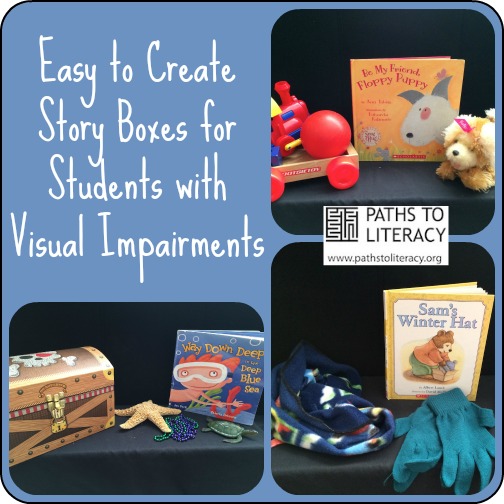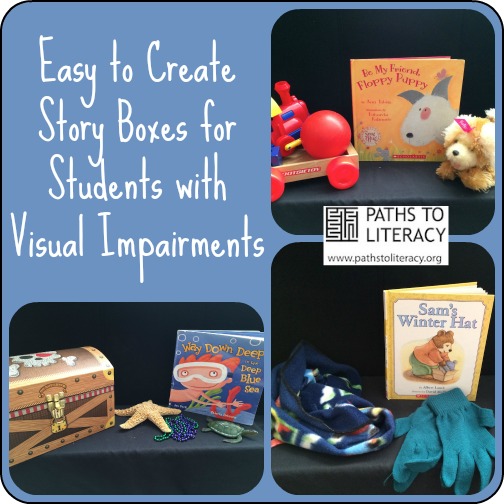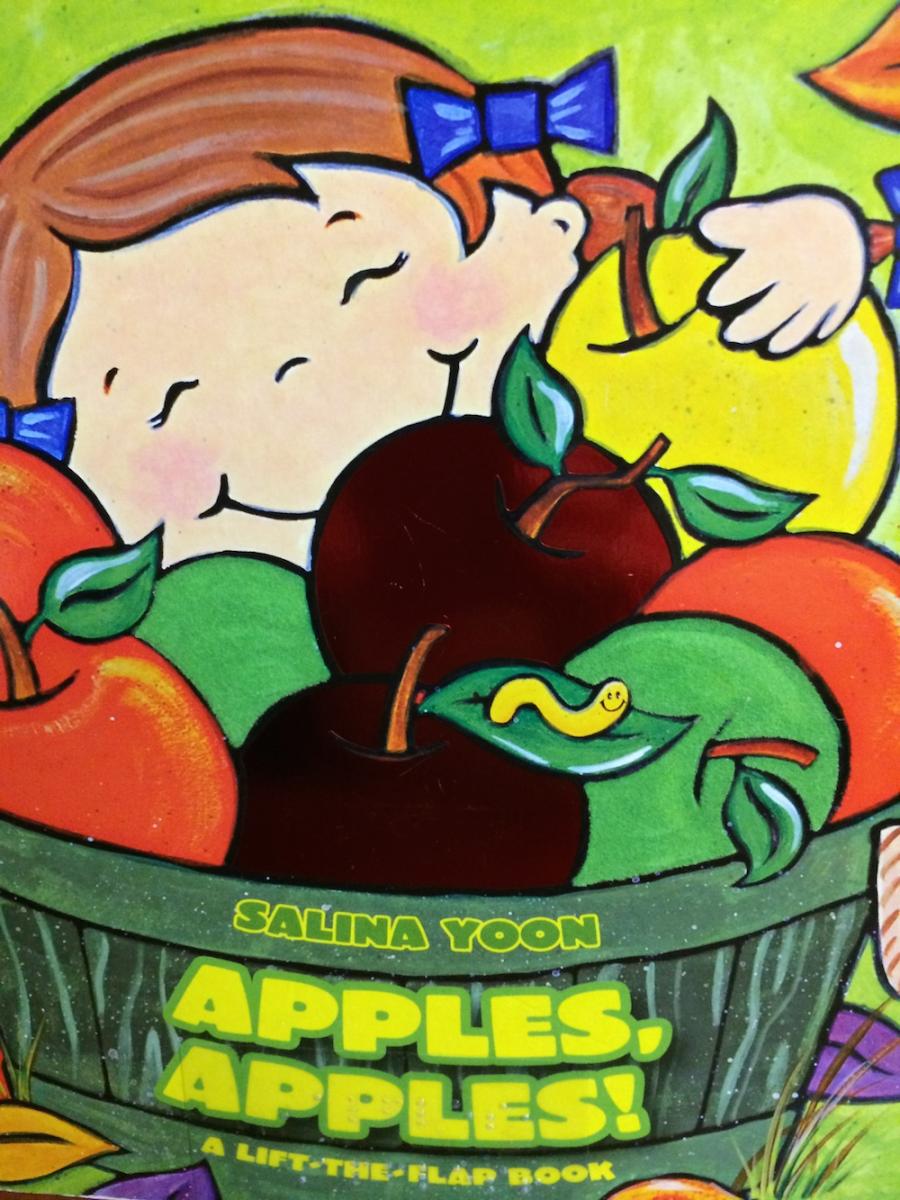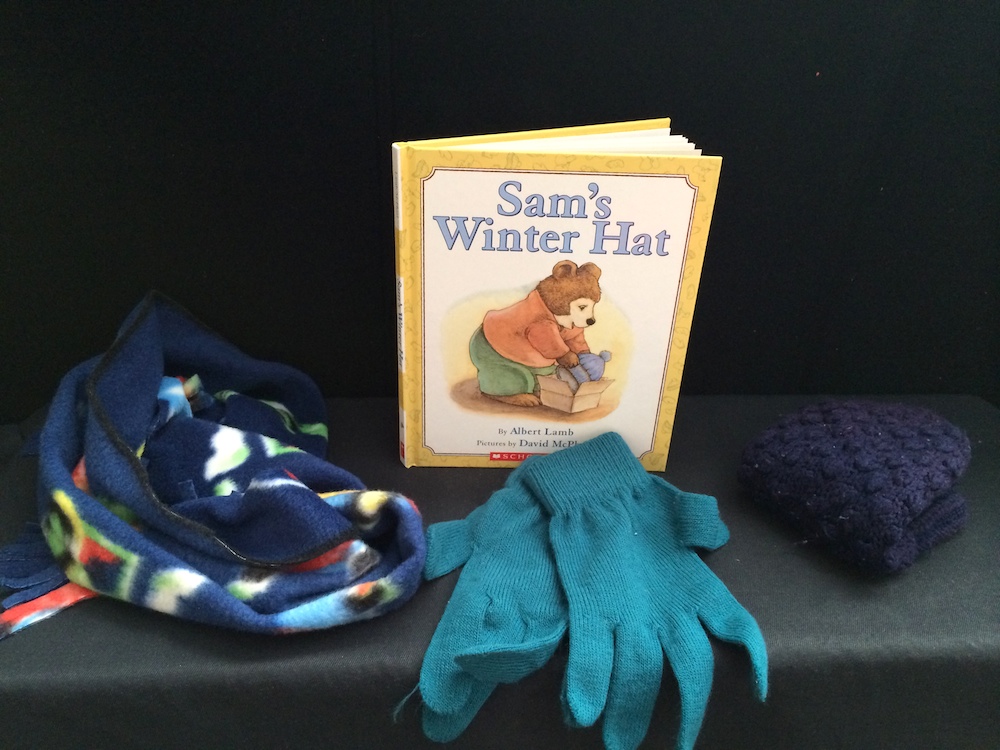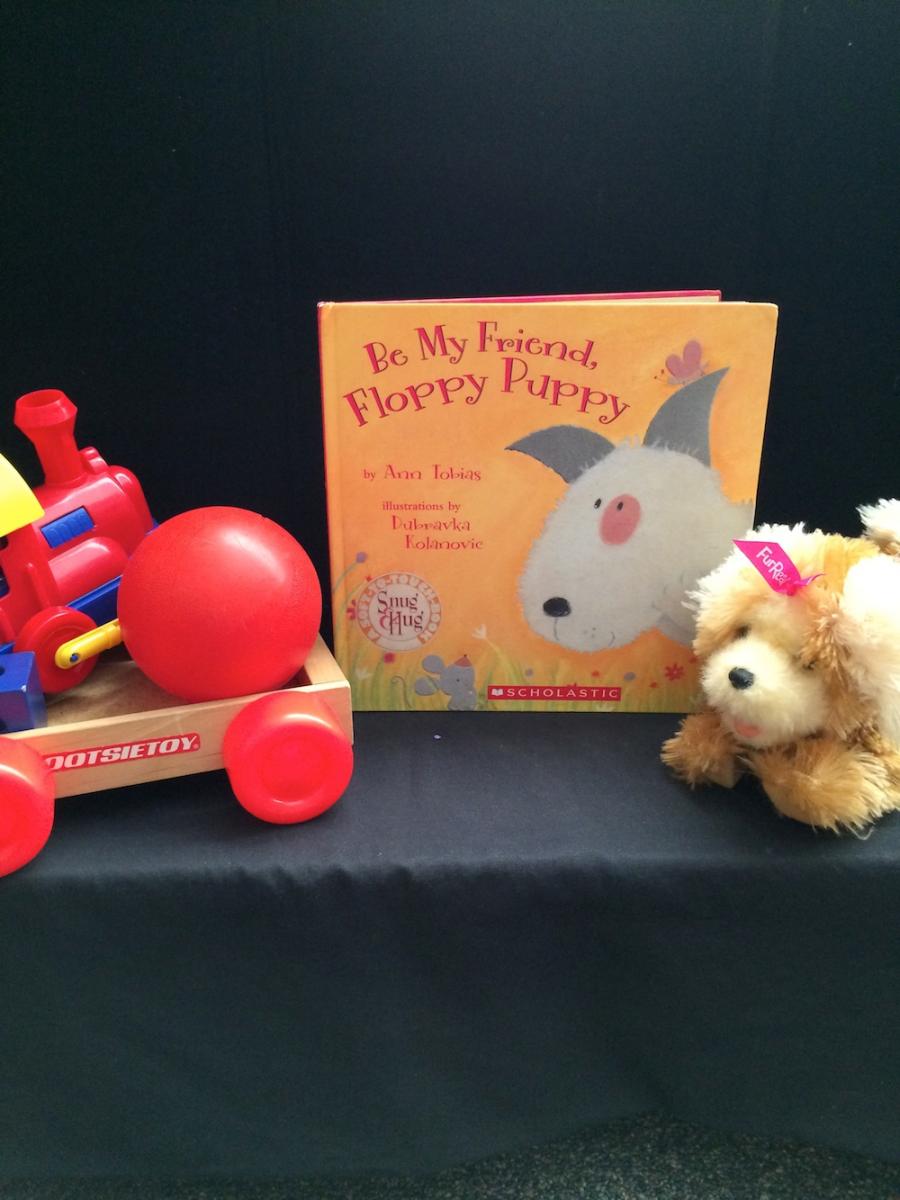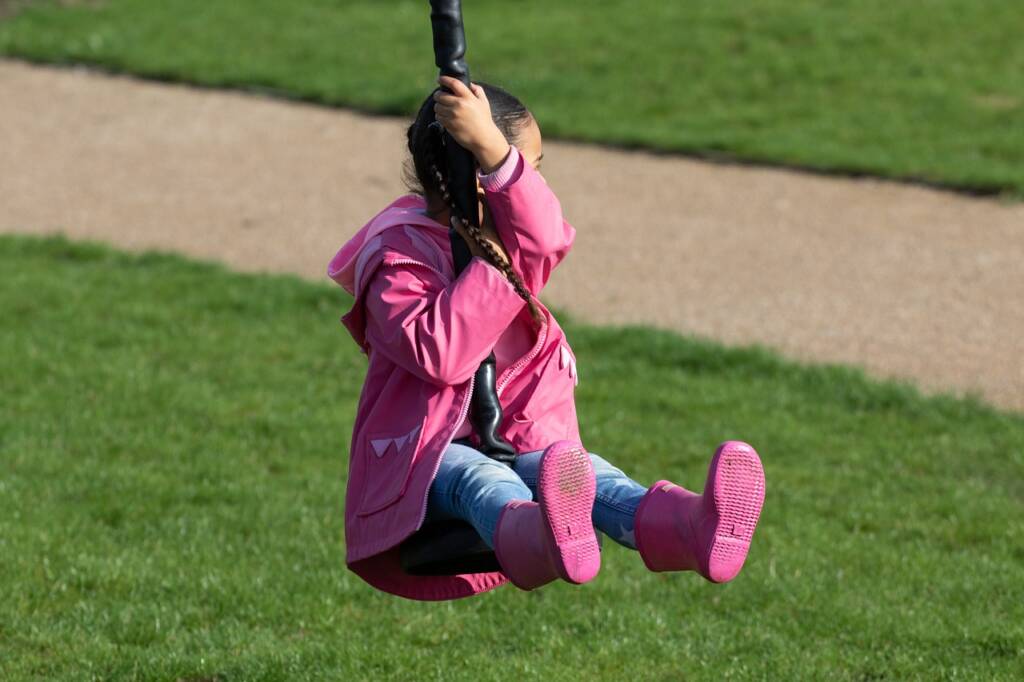Story boxes have been around for years. When I taught Head Start they were called “prop boxes”. As a Head Start teacher, I used my prop boxes to make the story more fun, engaging and interactive. When I became a TVI I realized that story boxes were prop boxes. They still enhanced story times, but story boxes for students with visual impairments are essential. Story boxes bring the story to life; they make it meaningful, real and interesting. Story boxes are essential when teaching students with visual impairments, and they are a critical support to students with dual sensory loss.
The following books lend themselves well to a story box. When building a story box, use as many real items as possible. Many books in the age group are about animals and you may have to use a stuffed animal in its place. Although I realize children don’t always like stuffed animals, some do like them. For the students with some vision, they can see the stuffed animal. I have yet to find a way to use real animals on a regular basis, but fortunately the story is about so much more than the main character. Be creative when reading and acting out the story. Use the items you have gathered, but use additional supports that include all of the senses. For example, there are a number of story support apps available that have every sound imaginable, divided up by category. Use movement: move in the manner the story describes providing prompting and support as needed. When possible taste the items. Each student should have repeated opportunities to touch and explore the story box items before and during the story.
Below are ten stories – one for each month of school.
August: Mouse Loves School by Lauren Thompson
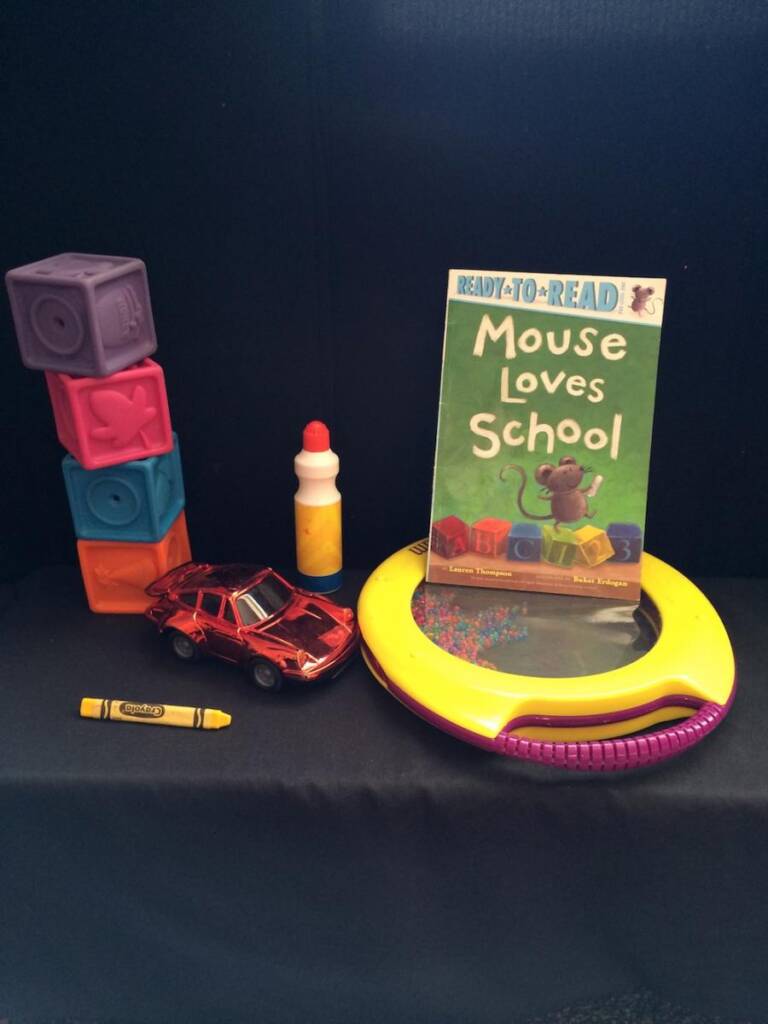
This is a good book to introduce classroom items to the students at the start of the school year.
- Stuffed mouse
- Backpack
- 4 Blocks
- Red car
- Drum
- Book
- Plant
- Yellow crayon, paper
- Juice
- Fruit
- Cookies
- Puzzle or shape sorter
September: Sometimes I Like to Curl Up in a Ball by Vicki Churchill
Students explore different ways to move when reading this story.
- Cozy items: pillow, blanket (peek a boo)
- Jumping: Trampoline, or items to stomp on- bubble wrap, cereal in a zip bag
- Scream: Microphone or megaphone
- Branch from a tree
- Mirror
- Mud, chocolate pudding, dirt, chocolate cool whip or play dough
October: The Little Old Lady Who Wasn’t Afraid of Anything by Linda Williams
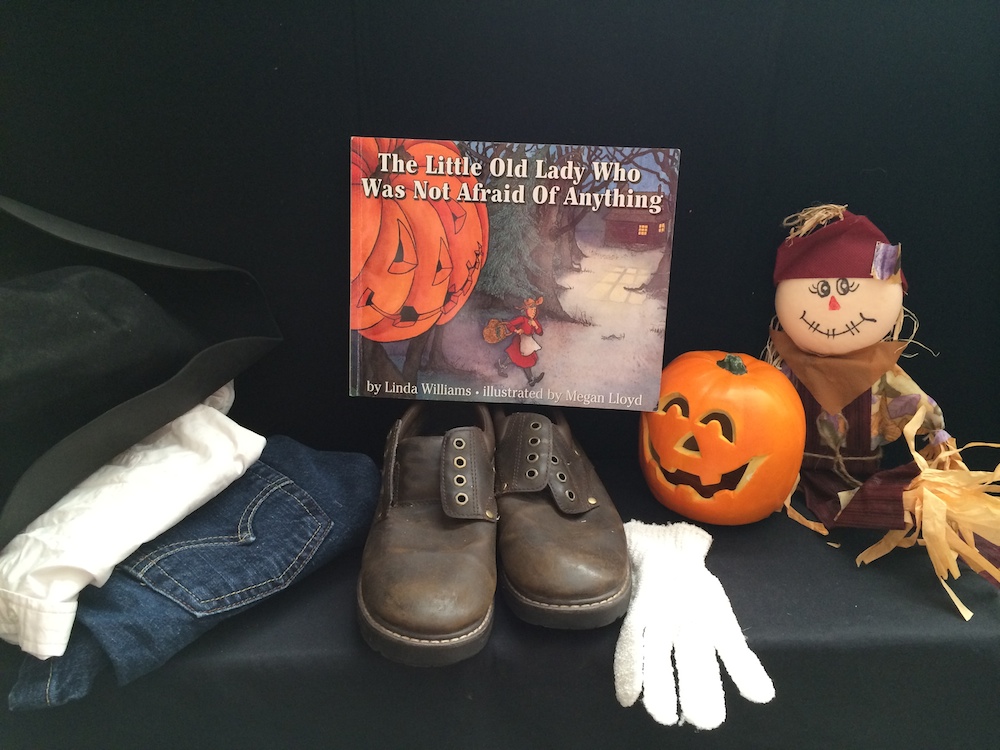
When reading this story, provide each child with the item mentioned. It has a repeating phrase such as “two shoes go clomp, clomp”. Students can act out each movement on each page. They work on anticipation, turn taking, and movement.
- Hat
- Shoes
- Pants
- Shirt
- Two gloves
- Jack O lantern
- Scarecrow
November: Apples, Apples by Salina Yoon
This story is great in the fall or anytime you are doing a unit on gardening. It is a short, simple story but allows for throughout exploration of the different foods made with apples.
- Apples- red, yellow, and green
- Applesauce
- Apple pie
- Apple juice or cider
- Apple Basket
December: If You Take A Mouse to the Movies by Laura Numeroff
There are so many extension activities for this book; you can use it for a couple of weeks. Students can easily interact with you during this story.
- Popcorn
- String
- Tree
- Snowman
- Carrot
- Snowballs
- Blanket
- Music
- Microphone
- Ornaments
- Paper
- Glue, glitter
January: Sam’s Winter Hat by Albert Lamb
This book is great for exploring winter clothes, and color identification. It is also fun to put the different items in the package, open it and try on the hat, mittens, etc. I typically have enough hats for each child.
- Red Coat
- Green Mittens
- Hammer
- Trike
- Package
- Blue Hat
- Tree Branch
February: Be My Friend, Floppy Puppy by Ann Tobias
This is a great book about playing and friendship. It is easy to imitate the activities described in the book.
- Stuffed puppy and cat
- Toy Box
- Blocks
- Book
- Train
- Small Wagon
- Bird, Bird seed
March: The Very Hungry Caterpillar by Eric Carle
This book requires last minute shopping; due to the amount of fresh food needed. However, if you can’t find a real caterpillar, these stuffed caterpillars are the next best thing. (I usually find caterpillars in my garden – eating my plants)
- 2 Stuffed or real caterpillars- one small and one large
- Butterfly
- Green leaf
- 1 apple
- 2 pears
- 3 plums
- 4 strawberries
- 5 oranges
- Cake, ice cream cone, pickle, cheese, salami, lollipop, cherry pie, sausage, cupcake, and watermelon
- Brown fabric- towel, sheet, etc
April: How Much is that Doggie in the Window by Bob Merrill. Retold by Iza Trapani
I like to do this story when our therapy dog is visiting. But I do use the Fur real puppy that has soft fur, barks, and walks when it isn’t our turn for the therapy dog.
- Lizards- Walmart, Target and Michael’s have great lizards that are as close to the real thing as you can get.
- Money- Bills and coins
- Piggy Bank
- Ice Cream Cone
- Lollipop
- Box of chocolates
- Lemons and Lemonade
- Box of tissues
May: Way Down Deep in the Deep Blue Sea by Jan Peck
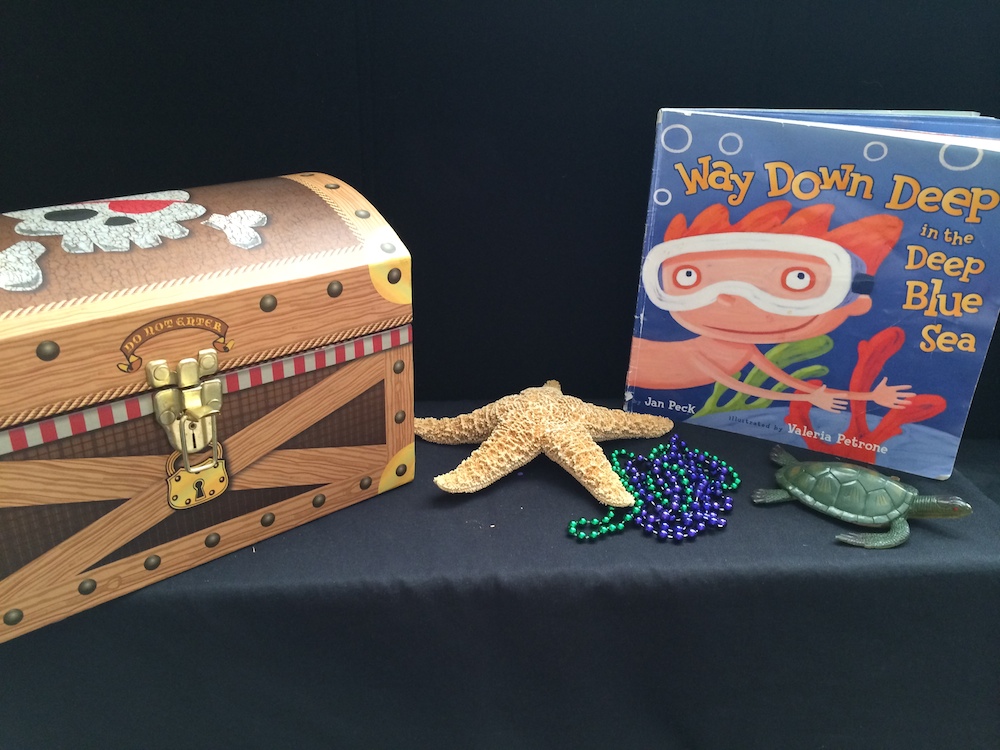
This is one of my favorites. While it is hard to replicate all of the ocean animals, there are several you can purchase at a craft store. For the animals that can’t be purchased (whale, shark) a toy is a second choice. To enhance this story, I use the EPIC FX sound app which has real sounds. I use the sounds for the repeating phrase “Swim Away”, the whale, and the dolphin.
- Treasure box
- Treasure- gold coins, change or beaded necklaces
- Bucket to hold water for the “Sea”
- Starfish
- Hermit Crab
- Sea Horse
- Swordfish
- Dolphin
- Whale
- Shark
- Turtle
Storage Tip: In my experience, it is easier to use boxes or baskets to keep the book and items in the box. That way you aren’t scrambling at the last minute to find all of the necessary items.
